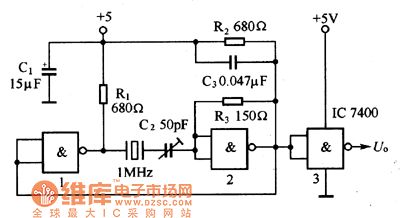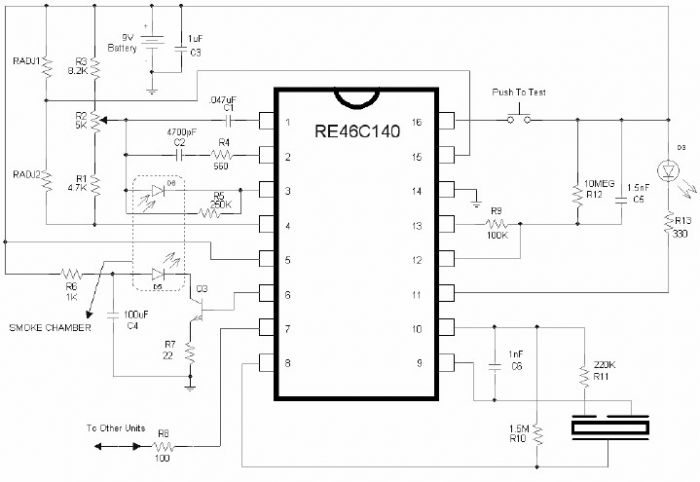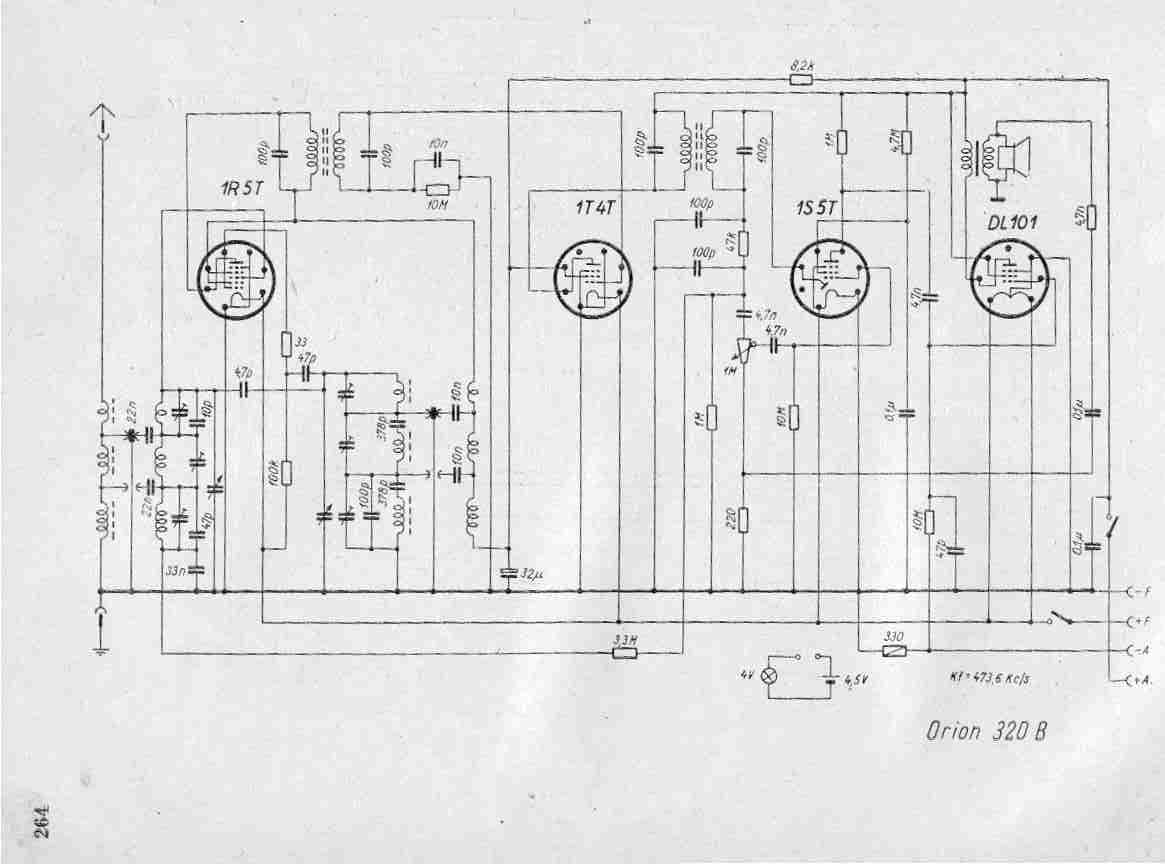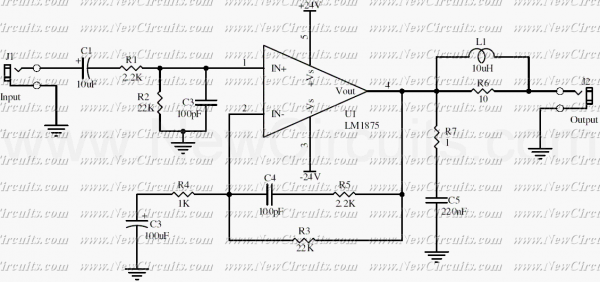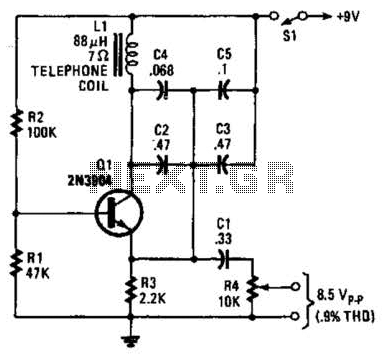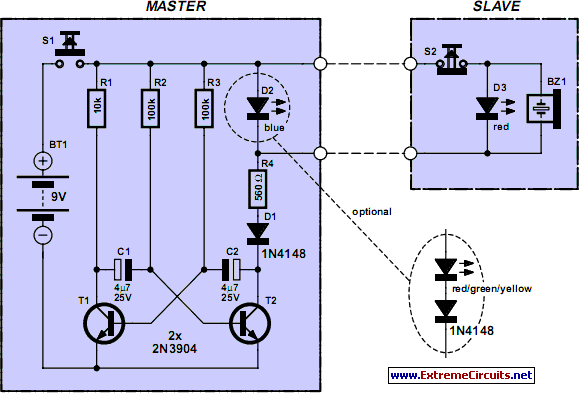
1 KHz Audio Oscillator schematic
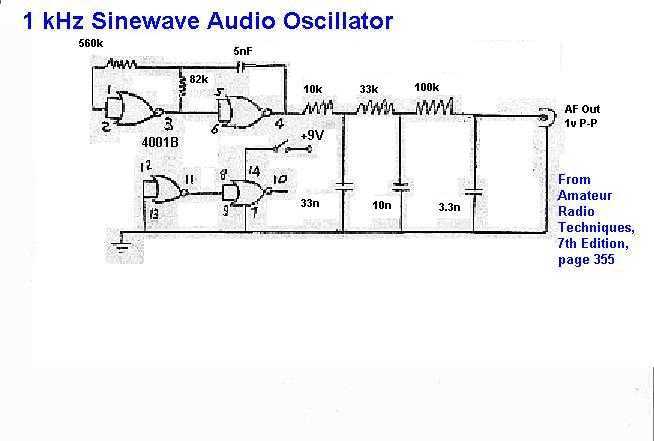
This circuit consists of a CMOS square wave oscillator on a frequency of approximately 1 kHz. The RC filter, which has a roll-off frequency of 500 Hz, filters the harmonics, providing a sine-wave output.
The described circuit features a CMOS (Complementary Metal-Oxide-Semiconductor) square wave oscillator, which is a type of oscillator that generates a square wave signal at a frequency of approximately 1 kHz. This frequency is determined by the values of the resistors and capacitors used in the circuit, typically configured in an astable multivibrator arrangement. The CMOS technology offers low power consumption and high noise immunity, making it suitable for battery-operated devices.
The output of the oscillator is a square wave, which contains a fundamental frequency and its harmonics. To convert this square wave into a more desirable sine wave, an RC (Resistor-Capacitor) filter is employed. This filter acts as a low-pass filter, effectively attenuating the higher frequency harmonics while allowing the fundamental frequency to pass through. The roll-off frequency of the RC filter is set at approximately 500 Hz, which means that frequencies above this point will be significantly reduced in amplitude, resulting in a cleaner sine wave output.
This circuit configuration can find various applications, including sidetone circuits in transmitters, where a feedback signal is used to provide audio feedback to the operator, and signal injectors for audio tests, which are used to introduce a known signal into a system for testing and troubleshooting purposes. The ability to filter harmonics and produce a sine wave makes this circuit particularly useful in audio applications, where signal integrity is crucial.This circuit consists of a CMOS square wave oscillator on a frequency of approximately 1 kHz. The RC filter, which has a roll-off frequency of 500 Hz, filters the harmonics, providing a sine-wave output. The oscillator has many uses ? sidetone circuits in transmitters and signal injectors for audio tests are just two. 🔗 External reference
The described circuit features a CMOS (Complementary Metal-Oxide-Semiconductor) square wave oscillator, which is a type of oscillator that generates a square wave signal at a frequency of approximately 1 kHz. This frequency is determined by the values of the resistors and capacitors used in the circuit, typically configured in an astable multivibrator arrangement. The CMOS technology offers low power consumption and high noise immunity, making it suitable for battery-operated devices.
The output of the oscillator is a square wave, which contains a fundamental frequency and its harmonics. To convert this square wave into a more desirable sine wave, an RC (Resistor-Capacitor) filter is employed. This filter acts as a low-pass filter, effectively attenuating the higher frequency harmonics while allowing the fundamental frequency to pass through. The roll-off frequency of the RC filter is set at approximately 500 Hz, which means that frequencies above this point will be significantly reduced in amplitude, resulting in a cleaner sine wave output.
This circuit configuration can find various applications, including sidetone circuits in transmitters, where a feedback signal is used to provide audio feedback to the operator, and signal injectors for audio tests, which are used to introduce a known signal into a system for testing and troubleshooting purposes. The ability to filter harmonics and produce a sine wave makes this circuit particularly useful in audio applications, where signal integrity is crucial.This circuit consists of a CMOS square wave oscillator on a frequency of approximately 1 kHz. The RC filter, which has a roll-off frequency of 500 Hz, filters the harmonics, providing a sine-wave output. The oscillator has many uses ? sidetone circuits in transmitters and signal injectors for audio tests are just two. 🔗 External reference
